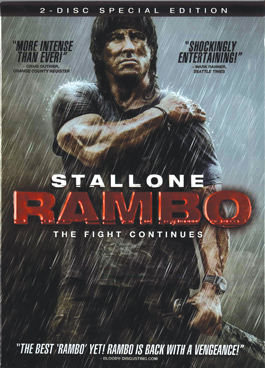home | metro santa cruz index | movies | current reviews | film review

DVD Reviews
Fox Western Classics; three discs; 20th Century Fox; $19.98
This three-fer is a real bargain that proves there's more to Westerns than John Wayne. In Garden of Evil (1954), three Gold Rush adventurers end up stranded on the coast of Mexico: Hooker (Cary Cooper), a laconic ex-sheriff; Fiske (Richard Widmark), a glib card shark; and Luke (Carmeron Mitchell), a young hothead. Hanging out in the local cantina (and listening to a very young Rita Moreno), they encounter Leah (Susan Hayward), who hires them to travel inland to save her husband, who is trapped in a gold mine. Days of hard riding follow, until they arrive at an abandoned village buried in the lava from a volcano. After rescuing the husband (Hugh Marlowe), the men lust after Leah and fight their way past attacking Apaches (who have strayed way, way out of their range). Henry Hathaway's epic was an early CinemaScope feature and takes great advantage of some fabulous settings in Michoacán. Husky-voiced Hayward (a real pain on the shoot, according to an interview with Hathaway) acts with her hair--and what hair it is, full, free-flowing, deep auburn and impervious to jungle humidity. The meat of the movie comes in the various discussions about how a man should act in the face of temptation--greed for gold and greed for a woman. After many bitter recriminations, Marlowe's character makes a tortured sacrifice to save his dignity. Meanwhile, Cooper and Widmark trade truisms about the masculine code. Cooper on attention to duty: "Somebody's got to stay. Somewhere in the world, somebody has to get it done." Near the end, comes the summa theologica of the American Western: "It doesn't matter what a man says, only what he does." The extras include lots of juicy gossip about the location shoot, especially Hayward's need to run off for a quick tryst with Howard Hughes. Rawhide (1951 and no relation to the TV show), directed by Henry King, stars a miscast Tyrone Power, who looks too old to be the hapless second-in-command at a lonely stagecoach way station. He and traveler Susan Hayward (with an infant in arms) are held hostage by sensitive robber Hugh Marlowe and his psycho sidekicks (including a drooling Jack Elam). The action--or lack thereof--takes place in and around the one set. Gorgeous black-and-white images by cinematographer Milton R. Krasner make up for the static premise--Power and Hayward spend nearly half an hour clawing a hole in an adobe wall. An excellent extra discusses the history of location shooting in Lone Pine on the eastern side of the Sierra, where Rawhide was made. The Gunfighter (1950), another Henry King job, suffers from the same inertia as Rawhide. After a nifty duel at the beginning, world-weary fast-drawer Jimmy Ringo (Gregory Peck in a droopy mustache and shapeless hat) spends the rest of the movie moping around the town where his wife (Helen Wescott) teaches school and raises the boy he's never met. Everyone is gunning for him, the fate of all gunslingers who live too long. Again, superb cinematography (by deep-focus master Arthur Miller) rides to the rescue. All three discs come with copious supplemental material, including fascinating behind-the-scenes interviews.
(Michael S. Gant)
Rambo: Special Edition; two discs; Lionsgate; $34.98
In choosing this moving story of Christian humanitarians who fall into the clutches of Burmese soldiers, Sylvester Stallone has set his brutal John Rambo up for a voyage of spiritual discovery: bloodshed only leads to more bloodshed, an eye for an eye leaves the whole world blind. The only true resistance, Rambo learns, is nonviolent resistance. Nah, I'm just kidding. Rambo has the Burmese genocide angle, it's got the Christian do-gooders in trouble, but it's all window-dressing. Rambo is a gorefest, plain and simple. It's John Rambo as pure animal, responding only to the twitch of action-kill nerves. The old Dead Kennedys parody "Rambozo the Clown" is as spot-on as ever: "Pull the string in his back, we win the war." And rest assured, that war was carefully selected for MOE (Maximum Obvious Evil) value. Launching a pre-emptive strike against the traditional Rambo blowback, the first part of the movie is spent proving beyond a shadow of a doubt that the hundreds of people Rambo is about to take out all deserve it. The soldiers of the Myanmar junta are not corrupt or misled men. They're more like demons set upon the landscape to rape, mutilate and kill at will. Really, how can Rambo justify not killing them? In the DVD extras, the actors admit that having Stallone behind the camera was like being directed by Rambo himself. But I'd think the real Rambo would have made this a shining, brightly lit action epic from the Reagan era. Instead, what Stallone chose to make is basically a Rambo horror film, all dark jungle and endless rain, the gunfire punctuated by shock slashings, decapitations and buckets of blood. Is there anywhere to go with this character but Freddy vs. Jason vs. Rambo? (The Special Edition also includes a digital download of the movie.) (Steve Palopoli)
Send a letter to the editor about this story.
|
|
|
|
|
|